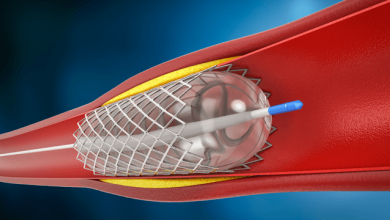Search results
Author(s):
Fernando Alfonso
Added:
3 years ago
Scale of the Problem
Treatment of patients with in-stent restenosis (ISR) remains a significant clinical problem.1 Bare-metal stents (BMS) continue to be used in a large number of patients undergoing percutaneous coronary interventions (PCIs).1–4 BMS are indicated in patients with high bleeding risks or those who are unable to maintain long-term dual antiplatelet therapy. Economic reasons and…
View more
Cutting Balloon Versus Conventional Balloon Angioplasty for the Treatment of Coronary Artery Disease
Author(s):
Remo Albiero
Added:
3 years ago
Article
Author(s):
Jacques Machecourt
Added:
3 years ago
Drug-eluting stents (DES) have been recognised as a ‘breakthrough technology’ since 2003 due to their unique capacity to reduce clinical restenosis. The difference in restenosis rates, as assessed by angiography, was so large between DES and bare-metal stents (BMS) in the first trials – 0% versus 26% after six months in the first published trial (RAVEL) with the sirolimus-eluting stent (SES),1…
View more
Author(s):
Ioannis Iakovou
Added:
3 years ago
Stent thrombosis (ST) is the sudden occlusion of a stented coronary artery due to thrombus formation. The clinical consequences of ST are frequently catastrophic – most episodes occur within two weeks of stent implantation – and include death in 20–48% or major myocardial infarction (MI) in 60–70% of cases.1–3 When bare-metal stents (BMS) were first introduced, ST was a common complication…
View more
Coronary Arteries and Sirolimus-eluting Stents - Applications, Benefits and Future Potential
Author(s):
Ricardo Seabra-Gomes
Added:
3 years ago
Article
Author(s):
Ashok Seth
Added:
3 years ago
“I do not know what I may appear to the world, but to myself I seem to have been only like a boy playing on the sea-shore, diverting myself in now and then finding a smoother pebble or a prettier shell than ordinary, whilst the great ocean of truth lay all undiscovered before me.” Sir Isaac Newton
Advances in Percutaneous Coronary Intervention – An Overview
Over the last 10 years, the…
View more
Author(s):
Gaetano Antonio Lanza
,
Hiroaki Shimokawa
Added:
11 months ago
Author(s):
Athanassios Manginas
,
Dennis V Cokkinos
Added:
3 years ago
Coronary artery ectasia (CAE) is a relatively common entity causing inappropriate dilatation of the coronary vasculature. The exact mechanism of its development is unknown, but evidence suggests a combination of genetic predisposition, common risk factors for coronary artery disease (CAD) and abnormal vessel wall metabolism. It frequently co-exists with aneurysms elsewhere, mostly involving the…
View more










